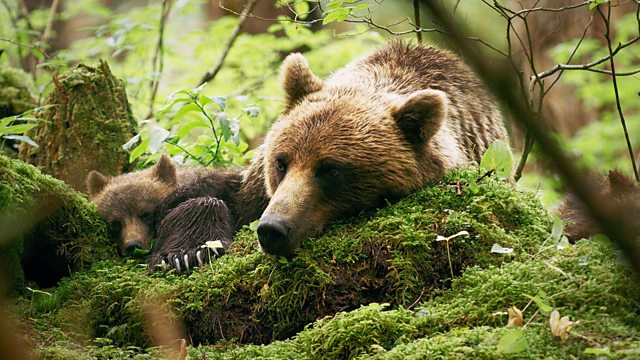Alaska: Last American Frontier – In southeast Alaska, there’s an ice-bound Eden that harbours possibly the richest temperate rainforests of all. The vast majority of Alaska’s coastal temperate rainforests are old-growth, consisting primarily of Western hemlock, Sitka spruce, mountain hemlock, and Alaska yellow cedar. Mature coastal temperate rainforests are extraordinarily complex and stable habitats. Over thousands of years many wildlife species have evolved to exploit this habitat. Understanding the complexity of this habitat is only now beginning to emerge under scientific study.
Travel to the far corners of the planet and discover the secrets of Earth’s few remaining untouched lands, all brimming with life. Helena Bonham Carter introduces us to some of the planet’s most stunning wildernesses around the world, and their beautiful and fascinating inhabitants. The filmmaker explores the remote areas across Earth that are untouched by human civilization and are flourishing with rich biodiversity.
Alaska: Last American Frontier
Tongass National Forest
The Tongass National Forest in Southeast Alaska is the largest U.S. National Forest at 16.7 million acres ( 6,800,000 ha). Most of its area is temperate rain forest and is remote enough to be home to many species of endangered and rare flora and fauna. The Tongass, which is managed by the United States Forest Service, encompasses islands of the Alexander Archipelago, fjords and glaciers, and peaks of the Coast Mountains. An international border with Canada (British Columbia) runs along the crest of the Boundary Ranges of the Coast Mountains. The forest is administered from Forest Service offices in Ketchikan. There are local ranger district offices located in Craig, Hoonah, Juneau, Ketchikan, Petersburg, Sitka, Thorne Bay, Wrangell, and Yakutat.
The Tongass includes parts of the Northern Pacific coastal forests and Pacific Coastal Mountain icefields and tundra ecoregions. Along with the Central and North Coast regions of British Columbia designated as the Great Bear Rainforest, the Tongass is part of the “perhumid rainforest zone”, and the forest is primarily made up of western red cedar, sitka spruce, and western hemlock. The Tongass is Earth’s largest remaining temperate rainforest. The terrain underlying the forest is divided between karst (limestone rock, well-drained soil, and many caves) and granite (poorly drained soil).
Unique and protected creatures seldom found anywhere else in North America inhabit the thousands of islands along the Alaska coast. Five species of salmon, brown and black bears, and bald eagles abound throughout the forest. Other terrestrial animals include wolves, mountain goats, ravens, and sitka black-tailed deer. Many migratory birds spend summer months nesting among the archipelago, notably the Arctic tern. Orca and humpback whales, sea lions, seals, sea otters, river otters, and porpoises swim offshore.
The Tongass is also home to steelhead and salmon. The Tongass is also the only place in the United States where the Haida ermine, a rare and endangered species of weasel, can be found; aside from here, the only other place on Earth where it is found is the Haida Gwaii archipelago in Canada. Of the three subspecies of the Haida ermine, one is found on Prince of Wales Island and the other is found on Suemez Island (both located within the Tongass), with the third being found on Haida Gwaii.
Though its land area is huge, about 40% of the Tongass is composed of wetlands, snow, ice, rock, and non-forest vegetation, while the remaining 10 million acres (40,000 km2) are forested. About 5 million acres (20,000 km2) are considered “productive old-growth”, and 4,500,000 acres (18,000 km2) of those are preserved as wilderness areas.




